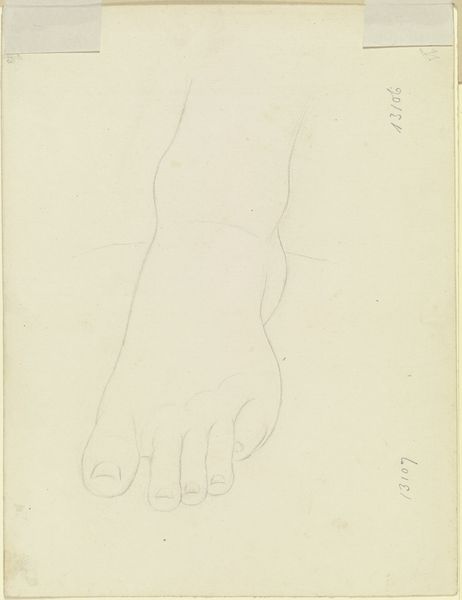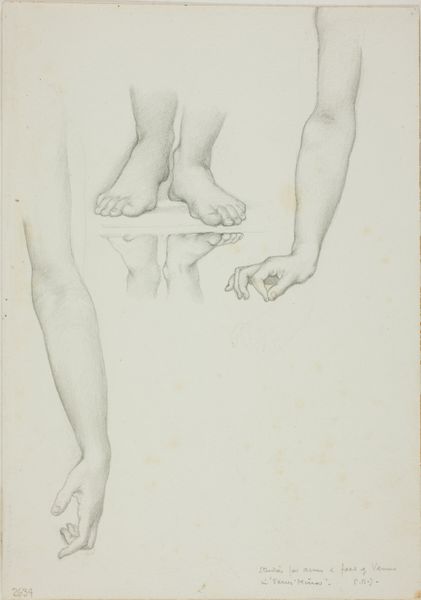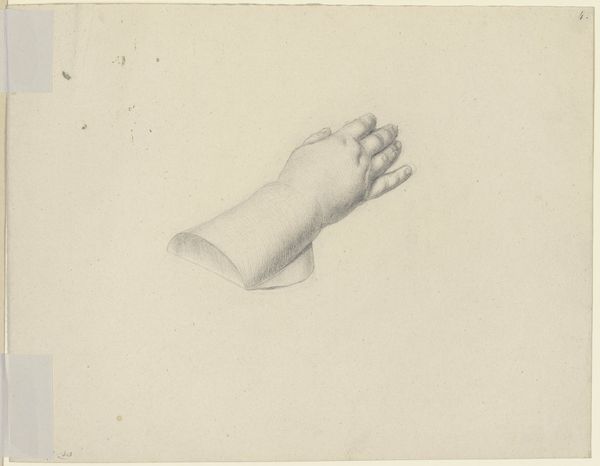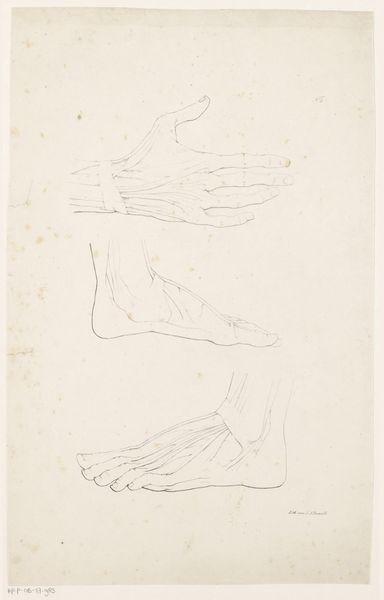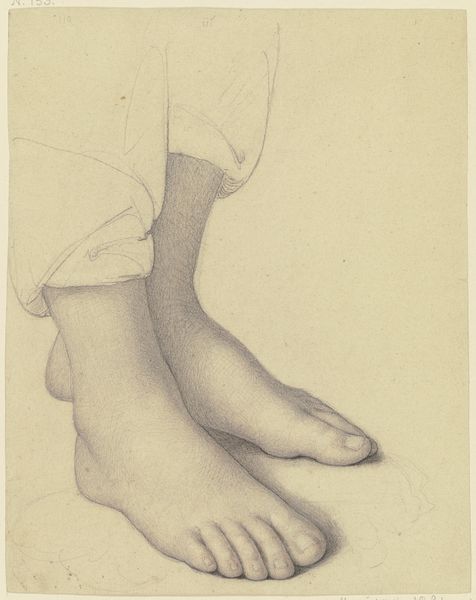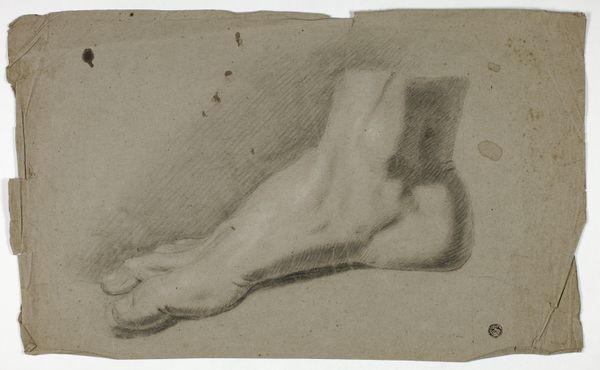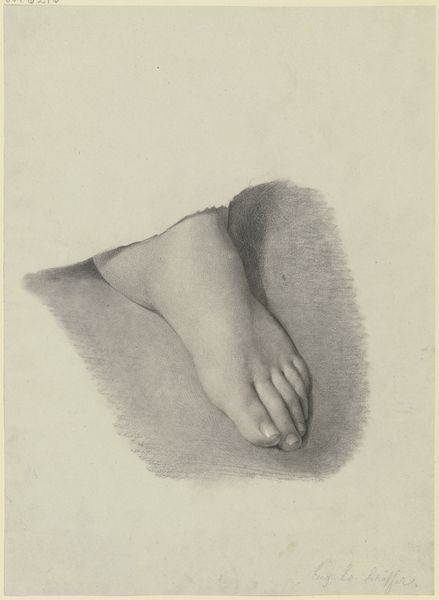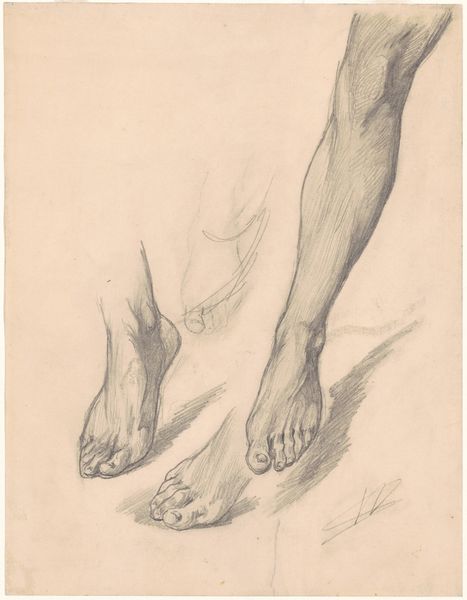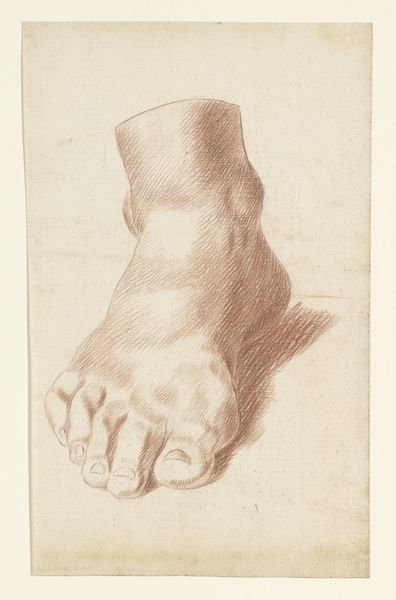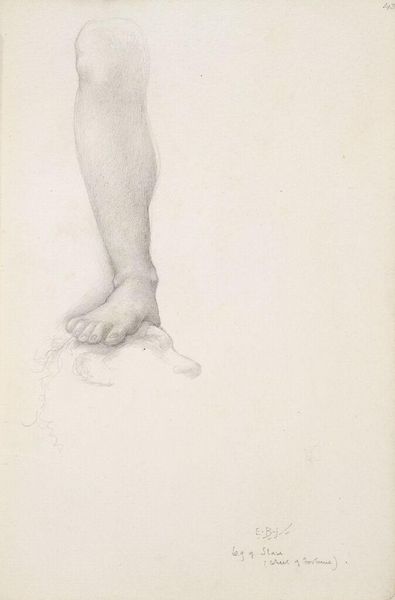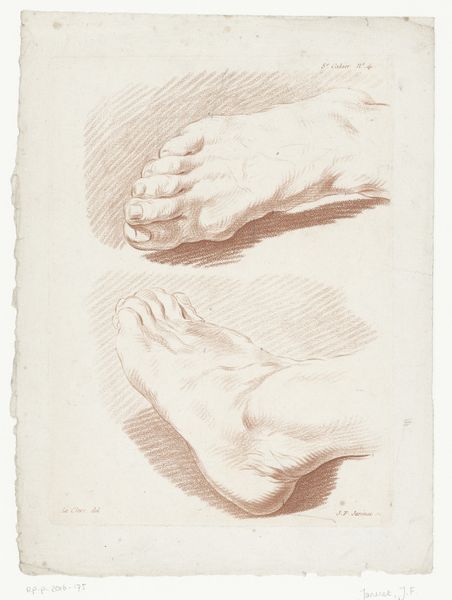
Arm and Feet, study for Mirror of Venus c. 1873 - 1877
0:00
0:00
Dimensions: 254 × 178 mm
Copyright: Public Domain
Curator: Edward Burne-Jones, a prominent figure in the Pre-Raphaelite movement, created this graphite and pencil drawing, titled “Arm and Feet, study for Mirror of Venus,” sometime between 1873 and 1877. It's currently held at the Art Institute of Chicago. Editor: It feels incredibly…fragile. Almost hesitant, with the soft graphite barely skimming the page. The arm and feet, so meticulously rendered, seem to float in a sea of emptiness. Makes you wonder, what is she standing on? Or reaching for? Curator: Indeed. These anatomical studies offer insights into Burne-Jones' process. Rooted in academic art tradition with elements of classical realism and Romanticism, his meticulous studies echo the Renaissance masters while simultaneously reflecting the artist’s romantic vision. There is this inherent idealism, seeking beauty in carefully constructed forms. Editor: That ideal is so clear. Each line is precise and loving. I notice how the rendering seems to elongate and almost etherealize these figures. What's interesting to me is that we know it’s preparatory for the ‘Mirror of Venus’. Did he plan to depict the figures with similar ambiguity within a detailed surrounding, I wonder? Curator: Absolutely. Within the context of Burne-Jones' fascination with classical mythology, "Venus" becomes more than just a pretty picture, it taps into centuries of cultural associations—love, beauty, desire, fertility, the archetype of the feminine, etc. Her reflection could mirror societal anxieties about female power or ideals of feminine beauty in Victorian England. Editor: Mirror, mirror, on the wall... And that’s where I feel the romanticism kicking in – it's the ambiguity of that reflection and those associations, and not just the prettiness, which elevates the artwork into something genuinely interesting and evocative, you know? Curator: It is that subtle suggestion that imbues such seemingly simple artwork with this depth and continued resonance that you are talking about. I am fascinated how timeless symbols and stories get filtered and reinterpreted throughout history to communicate anxieties. Editor: Right, each drawing stroke contributes to this silent, lingering quality, and what's left is really this sense of longing that mirrors ours today.
Comments
No comments
Be the first to comment and join the conversation on the ultimate creative platform.
